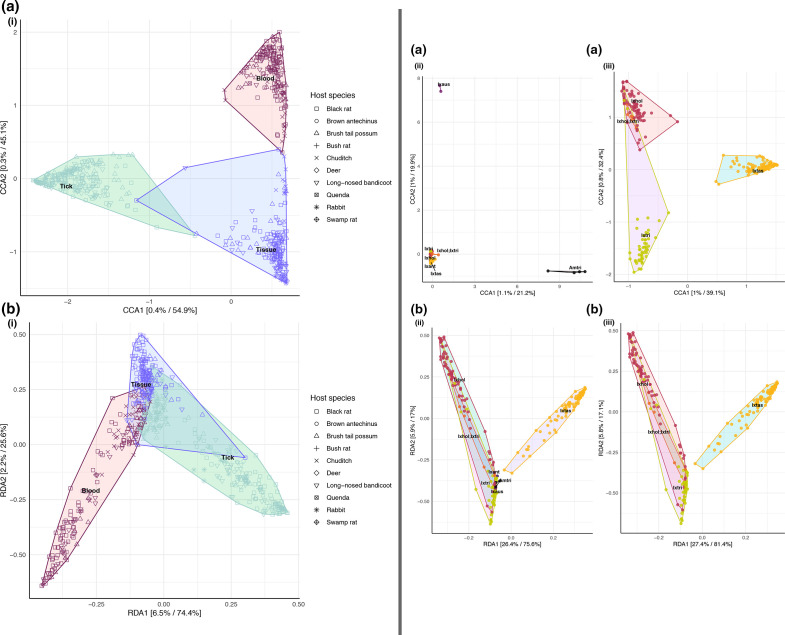Fig. 6.
Constrained ordination plot of microbiome composition from using constrained methods: (a) canonical correspondence analysis and (b) redundancy analysis (constrained principal component analysis). (i) Ordination analysis of all samples, N=536 (159 blood, 205 tick pools and 172 tissue) by sample type. (ii) Ordination of all tick samples by tick species. (iii) Ordination of three co-habiting tick species in Sydney Northern Beaches area. Prior to the analysis, ASVs with <0.1 relative abundance were removed. Analysis was done using the Hellinger transformation and Bray–Curtis distance measure. The relative contribution (eigen value) of each axis to the total inertia in the data as well as to the constrained space only, respectively, are indicated in percent on the axis titles. Tick species abbreviations: Amblyomma triguttatum (Am. tri), Ixodes antechinus (Ix. ant), Ixodes australiensis (Ix. aus), Ixodes holocyclus (Ix. hol), Ixodes tasmani (Ix. tas), Ixodes trichosuri (Ix. tri).

